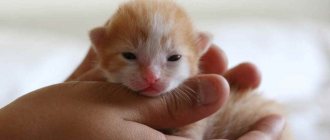Photo: Symptoms of pregnancy in dogs, period
Pregnancy of a dog is a process that requires a special approach to caring for it. Regular visits to a specialist, a balanced diet, a special approach to her hygiene are an incomplete list of requirements for successfully producing healthy offspring. It is worth paying close attention to the interesting position of the pet throughout the entire period. In this article we will answer questions about how long pregnancy lasts in dogs (term), what are the symptoms and signs.
How long does it leak and how to detect it?
In dogs, pregnancy lasts on average from 61 to 66 days, in other words, about 2 months. Sometimes, due to individual specifics, bitches can be pregnant a little longer, up to 72 days, or, conversely, a little less, 57 days. During the earliest stage of pregnancy, lasting up to one and a half weeks after copulation, it is impossible to diagnose the dog’s position by external manifestations. Its position becomes externally noticeable only in the second month.
Signs characteristic of pregnancy may appear in a dog shortly before giving birth. Indirect signs of a dog’s position can make themselves known as early as 2 weeks after conception. She will become drowsy, apathetic and lethargic. Changed behavior of an animal is not clear evidence of pregnancy.
It would be better to take your dog to a veterinarian, who, using examination methods and ultrasound, will quickly make an accurate diagnosis. A visit to the veterinarian should be made after mating, regardless of whether the dog began to behave differently or not. Early detection of pregnancy will ensure that appropriate measures are taken in a timely manner.
Take the Attention Test! Find 10 differences! (click right here!)
Find the answer Are you bothered by some problem or question? Enter “Breed” or “Name of the problem” into the form, press Enter and you will find out everything about the issue that interests you.
Test
A test to determine whether a dog is pregnant or not can be carried out in many veterinary clinics. The essence of this procedure is to analyze the animal’s blood serum in order to determine the amount of the hormone relaxin in it.
2 or 3 weeks after conception, the concentration of this substance begins to increase, which is detected during laboratory testing. If such a test is carried out during the third or fourth week of pregnancy, then its results are 100% reliable.
Ultrasound
If 24 to 35 days have passed since the mating, then the dog’s pregnancy can be accurately determined using ultrasound or ultrasound. During this period of pregnancy, the amniotic sacs containing the embryos will be clearly visible on the screen. The exact number of embryos at this stage of pregnancy is not detected by ultrasound. At 38 or even 45 days it will be possible to determine how many puppies the dog will have.
At these times, thanks to the use of ultrasound, it is possible to make a prognosis of the course of pregnancy and determine how viable the embryos are - this research method even allows you to assess the condition of the internal organs of the dog’s offspring. If the pregnancy proceeds well, the embryos have a clearly visible heartbeat and exhibit normal mobility.
Sometimes pregnancy becomes detectable by external signs already at the end of 1 month - swelling of the skin of the mammary glands is observed, the nipples will be clearly visible. Sometimes the dog's belly even becomes enlarged. But such signs in the early stages are the exception rather than the rule.
What could go wrong
Pregnancy doesn't always go smoothly. The first problems may arise during fertilization. Even with the correct mating technique and repetition twice, the female may remain unfertilized. In this case, you can repeat the mating with another male for the next cycle.
Complicated childbirth is not uncommon in small breeds, especially when the sizes of the female and male do not match. In this case, surgery will be required.
Pathologies of pregnancy
There are many pathologies and problems that arise during pregnancy. This depends on the compatibility of partners, hereditary diseases and sudden exacerbations, infections, physical activity and injuries. It is important to monitor the female’s condition and regularly show her to the veterinarian.
Frozen pregnancy
With this pathology, the development of one or more embryos freezes. A particularly dangerous phase is the 3rd week , when the main skeleton and muscle mass are formed. In this case, the body will try to get rid of the unnecessary element through miscarriage, resorption or decomposition of the embryo.
Symptoms may manifest as characteristic purulent discharge and pain, or may not even bother the female . If only one puppy stops developing (with a massive litter), then the pregnancy will continue. It is important to have your pet examined by a veterinarian and remove any remaining fetuses from the uterus to prevent rotting.
Ectopic
It may be a consequence of a disruption in the functioning of the endocrine or reproductive system of the bitch or an injury to the abdomen (the uterus ruptures and the embryos enter the abdominal cavity). Symptoms : blood and mucous discharge from the genitals, pain, internal bleeding. Pregnancy is terminated through surgery or medication (in the early stages).
Miscarriage in a dog
Removal of a dead fetus from the mother's womb. The reasons can be very different: infectious diseases (Brucellosis), poor-quality feeding, poisoning, injury, hormonal imbalance.
Symptoms : severe bleeding from the genitals, removal of the remains of the placenta, dead excreted fetuses near the mother. It is not recommended to touch or clean the female with bare hands. With an infectious disease, there is a risk of becoming infected. It is important to take your pet to the hospital immediately.
False pregnancy
Occurs 2-2.5 months after the last heat . It can be caused by internal harmonious imbalance, pathologies of the reproductive system, and psychological abnormalities. False pregnancy is exactly like a normal pregnancy with symptoms: toxicosis, swollen nipples, possible lactation, lethargy.
The consequences of such a deviation can be sexually transmitted infections, purulent mastitis, and poor-quality formations in the uterus and mammary glands.
Pregnancy always brings with it a lot of trouble; the owner will have to radically change the rhythm of life for the next 3-4 months. But for the sake of healthy, strong puppies, it is worth working hard, paying due attention to the mother, showing care and patience.
5 / 5 ( 1 voice )
Diagnostics
During the second month, the bitch's pregnancy becomes clearly diagnosable based on external manifestations, and it is no longer necessary to conduct clinical studies to determine whether the bitch is pregnant or not.
The fact that the animal is in position is indicated by the following series of signs:
- The animal becomes complete;
- There is swelling and enlargement of the mammary glands;
- The abdomen increases significantly in size.
The most significant increase in the animal's weight is observed 3 weeks before birth. Between 38 and 45 days after conception, you can even feel the fetuses in the womb. If you do not have the appropriate experience, you cannot do this yourself, otherwise you may accidentally injure both the fetus and the dog itself. On days 48-50, the exact number of fetuses can be determined by x-ray examination.
If a dog becomes pregnant for the first time, then lactation begins immediately after birth, or a few hours earlier. If the dog has previously given birth to offspring, then milk may appear even 40 days after conception. The norm is the appearance of milk a week or ten days before birth.
When diagnosing the course of pregnancy and calculating the approximate time of birth, rectal temperature is of considerable importance. If the fetuses develop without deviations or pathologies, then in the early period of pregnancy this indicator is within normal limits. In the week before giving birth, noticeable changes in rectal temperature are observed. A day or at least eight hours before the onset of labor, there is usually a sharp drop in rectal temperature. In large animals, rectal temperature can drop to 37 degrees Celsius. In a small dog, this figure can drop to 36 degrees. When the dog has already whelped, the rectal temperature returns to normal.
Recognizing early pregnancy in a bitch
The first signs of pregnancy can be noticed from the 14th day after mating. These signs are quite subtle and can be difficult to identify:
- Morning sickness . The dog loses its appetite. In the morning she experiences nausea. This is normal and should disappear over time.
- The mood changes. The female may experience slight apathy. She rests a lot during her walks and has begun to retire often.
- Changing nipples . Sometimes this may not be entirely obvious. If you look closely, you will notice that the nipples begin to swell slightly and change color.
- Increase in body weight . The dog's belly increases slightly. There may be a slight weight gain.
Based on the above signs, we can only assume that the dog is expecting offspring. More precisely, the veterinarian will tell you this, who will determine this using delicate palpation or ultrasound.
Changing the condition of a pregnant dog
The changes that occur in the dog and its fetus over time are presented in detail below. These data apply to Rhodesian Ridgebacks, and therefore may differ for dogs of other breeds. The information below acts as a guide, but is not the final truth.
Day 1 On this day the dogs are mated. Copulation does not guarantee conception, a necessary condition for which is ovulation - the release of eggs from the ovaries into the fallopian tubes, where the fusion of germ cells occurs. If there was no ovulation on the day of copulation, then the eggs can be fertilized in the following days, since if the sperm are normal, then they, while inside the uterus, can remain active for up to a week.
Day 2 Dogs are bred again to increase the likelihood of conception.
Days 3-4 Once inside the fallopian tubes, sperm join with eggs to form zygotes. The first days of conception do not affect the behavior of the animal. You need to feed and walk your dog according to the same routine as before. The animal’s physical activity should not be limited; in hot weather it should not be allowed to overheat.
Days 5-14 During this time, zygotes move in the fallopian tubes towards the uterus, which they reach around the 11th day. Embryos are enclosed in 3 embryonic membranes. On the surface of the outer membranes there are villi, which are used by the embryos to penetrate the mucous membrane of the uterus. Where the lining of the uterus meets the outer embryonic membrane, the placenta forms.
Days 15-17 This is the time when the embryos begin to develop. Towards the end of this stage, the embryo is divided into head and body. At this stage, the spinal column is formed and the formation of the central nervous system occurs. For the owners, the most crucial period begins, since any adverse effect on the animal can cause pathologies in the development of the fetus. It is necessary to eliminate all negative physical factors from the dog’s life, as well as emotional stress. During this time, any changes have a bad effect on the animal, so the daily routine and eating should be left the same. It is highly undesirable to change the dog’s place of residence.
Procedures excluded:
- Preventive vaccinations;
- Treating the dog with chemicals against external parasites.
At this stage, the first external symptoms of pregnancy appear:
- Some enlargement of the nipples, taking on a pinkish tint;
- Some thinning of the hair on the surface of the abdomen and, in particular, near the nipples.
Days 18-20 The embryos develop and enlarge their internal organs.
Days 21-25 At this stage, embryos undergo changes:
- The placenta is formed;
- Heart formation begins;
- Liver development begins;
- The spine is formed;
- Limbs stand out and develop;
- Jaws, ears, eyes and nose appear;
- The formation of teeth occurs.
The dog at this stage has the following series of symptoms:
- Lethargy and loss of mood;
- Loss of appetite;
- Nausea in the morning, sometimes leading to vomiting;
- Sometimes scanty vaginal discharge appears, transparent or the color of egg white.
During this period, you need to begin to make gradual changes to the animal's diet. Meals are provided more often than usual, but portions should be reduced.
At this time, pregnancy is well diagnosed by ultrasound. At the beginning of the period, only the germinal vesicles can be seen, the embryos are invisible.
Days 26-31 By the beginning of this period, the embryos reach the size of a walnut. Their bodies begin to harden the cranial and jaw bones due to their impregnation with calcium salts. By the end of this period, the embryo's eyebrows, nose, and chin are covered with sensitive hairs or vibrissae. The embryos can be felt with your fingers; only a specialist can do this. The dog's physical activity should be reduced to avoid injury to the fetus.
Days 32-35 This is the beginning of the dog’s second period of bearing her offspring. At this stage, her belly is getting bigger. By the end of the period, noticeable changes in the behavior of the animal are observed. It behaves more quietly, its sensitivity increases.
The animal’s appetite increases, and its diet should correspond to its condition:
- The food should contain an increased amount of protein.
- Meals should be at least three times throughout the day.
- The serving size should be reduced.
- The total amount of food consumed should be increased by 10% compared to the usual regimen;
- Overfeeding should be avoided.
By the beginning of this period, the weight of the fetuses is 20% of the weight of the newborn cubs. During this time, their intensive growth occurs. The bones of the ribs and limbs are strengthened.
Days 36-40 At this stage, the fruits grow faster. It includes changes:
- Increase in the overall size of the fetal body.
- Completion of the formation of all internal organs.
- The emergence of sex differences.
- Continued bone development.
- Growth of finger bones and spine.
- Shaping of the blades.
- Formation of the eyes.
- Beginning of fur growth.
Days 41-47 At this time, the fruits can be felt by palpation; it is not yet possible to accurately determine their number. The animal's uterus enlarges so much that it occupies more than 2 thirds of the abdominal cavity. The mammary glands become significantly enlarged, and the hair in the nipple area falls out.
At this stage, during the day the dog needs to be given 15-20% more food than usual. Feeding should be done in small portions, at least 3 and no more than five times a day.
During this period, she should not run, jump or make sudden movements.
At this time, the fetuses develop pelvic bones and continue to grow hair.
Days 48-54
By this time, the dog is noticeably larger. Her abdomen is greatly enlarged, and fetal movements will be noticeable. If this is not the first time she is pregnant, drops of milk may appear on her nipples.
There is anxiety in the animal's behavior. The dog is already looking for a place where it will give birth, and therefore the owners need to prepare such a place in advance and begin to accustom the animal to it.
Towards the end of the period, the dog rests a lot and often licks its nipples. Sometimes during this period the animal’s appetite may worsen or even disappear. You need to feed her often, in small portions, increasing the amount of food given during the day by 25 or even 50 percent.
At this time, the weight of fetuses is already 75% of the weight of newborn puppies.
Days 58-65
With the normal development of pregnancy at this time, the fetuses are already fully formed, covered with hair and ready to be born. A pet can start giving birth at any time, and therefore owners must be constantly ready to give birth to a dog. She needs to take her temperature in the mornings and evenings. If the temperature drops by 1-2 degrees, then within 8 hours the amniotic fluid may break and contractions may begin. It is necessary to prepare the appropriate supplies and medications in advance. Another sign of impending labor is the animal's refusal to eat, which usually occurs 12 hours before the onset of labor.
Puppies are born one after another, at certain intervals. If intrauterine development is normal, then they are born covered with fur and with their eyes closed. After the puppy is born, the placenta must be removed and rubbed thoroughly.
The danger of imaginary pregnancy
In addition to the mental distress of the bitch, as well as her owner, false pregnancy triggers pathological processes and leads to the following diseases:
- Mastitis: The functioning of the mammary gland leads to the accumulation of secretions. Milking stimulates lactation. Lack of milk flow leads to inflammation - mastitis.
- Endometritis (secondary microflora) from the mammary gland reaches the uterus through the lymphatic ducts. Inflammation of the mucous membrane develops - endometritis. The disease can also occur as an independent inflammation: a hormonal imbalance that leads to imaginary pregnancy can cause inflammation of the endometrium.
- Pyometra is a purulent inflammation of the uterus that develops with improper treatment of endometritis or its absence. The pathological condition is life threatening.
- Exclusion of the bitch from breeding: the predisposition to the anomaly is inherited.
- Development of malignant tumors - if a dog has had two or more false pregnancies, there is a high probability of developing cancer.
Prepare before going to the vet
In the office, you may have to provide the veterinarian with all possible assistance (hold the animal while they take blood for analysis, give an injection, extinguish aggression, calm your voice, scratch its ears, stroke it). If you know that you are terrified of blood, IVs, or definitely cannot withstand the type of medical interventions, then perhaps you should ask a friend or relative for help.
Find a veterinary certificate, veterinary passport.
Take:
- Leash;
- Collar;
- Muzzle;
- Carrying;
- A pack of napkins;
- litter;
- Bowl, water (at the veterinarian's discretion)
Prepare answers to possible questions from the veterinarian:
- Are all vaccinations up to date on the animal?
- Pet’s behavior in recent days, appetite;
- His diet;
- What drugs and medicines did you give to the animal;
- Latest test data (if available).
It’s better to make an appointment in advance - you’ll save time and be able to calculate when you’ll have to take time off. This does not apply to life-threatening situations where you will have to take an animal to a veterinary clinic without an appointment.
Be affectionate with your pet, play, talk to him. You can take his favorite toy with you so that while you wait for your turn at the reception, you can distract your friend from the new environment.
Furry, feathered or scaly ones also need to be prepared. No matter how much you want to treat your little one with something tasty, remember: you need an empty stomach. Feeding is prohibited!
You can wash your animal without using detergents. But it is important not to touch your pet if there is nasal discharge, watery eyes, salivation (salivation), dandruff, scratching, rashes, skin scabs, loss of hair/feathers/scales, wounds and other external manifestations of a potential disease.
If the veterinarian has instructed, collect the animal’s urine in a sterile container, and pick up the feces with a stick (no blades of grass, specks, or debris). Transfer the feces into a sterile container. Send to the biochemical laboratory within 6 hours. The feces are examined for eggs of roundworms, pinworms, tapeworms, liver flukes, echinoccus, alvecoccus, pork tapeworm, bovine tapeworm, and gastrointestinal bleeding is detected.
At the veterinary hospital, the animal’s blood will be analyzed for antibodies to allergens, viruses, bacteria, and parasites.
Choosing a veterinary clinic
We determine the veterinary clinic where you plan to go. A big PR company doesn't promise quality. The price is explained by the huge amount of money invested in advertising and “signboarding” of the establishment.
It’s great if you can ask your friends about clinics where their pets were treated “humanely.” If you travel far from them, it may be worth sacrificing time for the health of your pet.
A few more tips on how to spot an unverified veterinary clinic:
- Refusal to provide certificates and licenses for veterinary activities.
- Strange and suspicious behavior of the veterinarian (inconsistency, flattery, attempts to intimidate, shouting).
- Prices are too low (compared to other organizations).
- Refusal to freely visit the veterinary clinic.
“We have a sanitary day”
Beware of scammers!
When you contact the veterinary clinic, you are informed: “we cannot accept you at this address, sanitary day/repair/inspection.” How much intelligence does a dispatcher have? The client is persuaded to have a veterinarian come to his home. The price does not change.
A veterinary clinic can exist purely nominally. And the invited “Aibolit” will not bear responsibility. There is a high probability of running into a person without a veterinary diploma or simply an unprofessional.
It is better to find time to visit the veterinary clinic on your own. This is safer for the animal.
Games on feelings
In real veterinary clinics there will be elements of “divorce”.
Veterinarians say that this is often determined by the client’s wallet. The greater the opportunity to pay for services and the more the owner worries about his pet, the more likely the animal will be prescribed additional immunostimulants, dietary supplements, water-soluble and fat-soluble vitamins, and special food. There are cases when this is really necessary (pedigreed, show animals, weakened after a serious illness). But it will be good if you ask your veterinarian in detail about the need for each appointment. Find out in detail about the results of the examination and analysis of your pet’s condition. Be persistent. Do not give in to attempts to intimidate you, be consistent in your questions. Consult a specialist who does not work at this veterinary clinic. If it turns out that half of the prescriptions are prescribed to enrich the veterinarian’s pocket, and not for the health of the animal, feel free to leave. And do not forget to leave a negative review about the organization - other owners may also suffer.
Causes
The ancestors of modern dogs were pack animals. The rutting period occurred once a year, before the most favorable season for raising offspring, that is, in the spring. It is known that living in a community leads to synchronization of life processes. If one bitch leaks, the rest will definitely follow. There weren’t enough males for everyone, since the stronger sex devoted almost their entire lives to hunting for prey and often died.
Those females who did not get a male followed the example of their companions.
The life of wild canines is fraught with risks, so some whelping females died. In this case, the cubs were fed by those who developed false pregnancies. Another reason: milk production requires three times as much food as normal sustenance. But luck did not always smile. When mothers ran out of milk, neighbors provided it. In domestic dogs, the situations described are unthinkable. However, genetic memory forces in some cases to observe the traditions of ancestors.
The following are the causes of false pregnancy:
- irregular matings;
- inept male;
- chronic diseases of the reproductive organs;
- regular use of contraceptives to disrupt estrus and terminate an unwanted pregnancy after an accidental mating with an outbred male.
How to find out the truth
Another possible way for veterinarians to make dishonest money is to conceal the diagnosis. Let's say a veterinarian discovers a malignant tumor in a cat. But if he says that the tumor is benign and treatable. A housewife who dotes on her pet will give money for already useless procedures, medications and surgical interventions.
The veterinarian may deliberately “downplay” the diagnosis in order to earn more money. If something doesn't add up, insist on clarification. There is no need to be intimidated by unfamiliar terms - take a short break and try to find information on the Internet.
You are free to leave (or threaten to do so) to another clinic at any time.
Make sure that the veterinary clinic is honest - get tested in an independent laboratory.
Justice
What to do if an animal was injured as a result of unprofessional actions of a veterinarian:
- Write an official complaint addressed to the head of the clinic.
- File a complaint with the city veterinary department.
- You can contact Rospotrebnadzor.
- Contact a lawyer for help
The Law “On the Protection of Consumer Rights” and Article 245 of the Criminal Code “Cruelty to Animals” are the grounds for considering claims regarding the work of veterinary clinics.
Saving
What to do if funds are limited and your pet needs medical care:
- Some procedures can be carried out independently. Giving a drug injection to a cat or dog is not difficult. Dressing uncomplicated wounds is also sufficient. Ask your veterinarian to teach you.
- How to properly give a pill to an animal: hide it in a lump of tightly rolled minced meat. If the animal bites through the decoy, you can crush the tablet and dissolve it in water, milk, liquid porridge, or food.
- If an animal has been prescribed a course of vitamins or some other non-medicinal but expensive drugs, it may be worth finding analogues at a lower price.
- There are various benefit programs in which you can participate. This could be, for example, sterilization, castration, or vaccination of an animal.
Prevention
To prevent the development of false pregnancy in bitches, the following rules should be followed:
- buy a puppy from trusted breeders who value their own reputation;
- develop a mating plan and carefully select partners;
- Use hormonal contraceptives to suppress sexual desire, disrupt estrus, and prevent unwanted pregnancy under the supervision of a veterinarian.
When walking a bitch during heat, do not allow accidental matings. The best option for preventing false pregnancy is castration of females after recovery. If the animal is not of breeding value and is kept in a high-rise apartment, the optimal solution is castration before the pet reaches sexual maturity.
Important points
- Refusal to vaccinate. This is dangerous for the animal and all those who will come into contact with it (people). Vaccination is a scientifically proven method of preventing many infectious diseases. Get your animal vaccinated by a trusted veterinarian (or with his approval yourself). It is important to get vaccinated against rabies - this is a fatal disease induced by the Rabies lyssavirus virus, which cannot be cured, but can be prevented.
- Anesthesia - inhalation, intravenous, anesthesia - epidural, conduction. They are necessary so that the animal does not suffer, to prevent painful shock. The veterinarian’s “hands on” are important here - both overdose and weak anesthesia lead to serious consequences (shock, poisoning, death) for the animal.
- Sterility, antiseptic. If you see that the veterinarian does not follow the rules of antiseptics (reuses disposable syringes, diapers, bandages, does not treat hands with antiseptic after contact with the previous animal), the best choice would be to contact another veterinarian.
- Important medicines:
- Antibiotics - amoxicillin, tilozil, trimethoprim, sulfadiazine, lincomycin, marbofloxacin;
- Antipyretics - paracetamol, salicylic acid preparations, antipyrine, butadione, amidopyrine;
- Anti-inflammatory drugs - vedaprofen, choline salicylate cycloferon, aspirin;
- Anesthetics - novocaine, lidocaine, dicaine, trimecaine;
- Hemostatics - fibrinogen, thrombin, vikasol, phytomenadione, calcium chloride, etamsylate;
- Antiparasitic - praziquantel, aversectin, albendazole, ivermectin, fluralaner.
If you care what happens to your pet, you should not neglect appointments.
Don't let unverified veterinary clinics endanger your pet and profit from their owner's feelings! If you have time and desire, it is worth trying to achieve justice in case of violation of ethical or legal standards.











